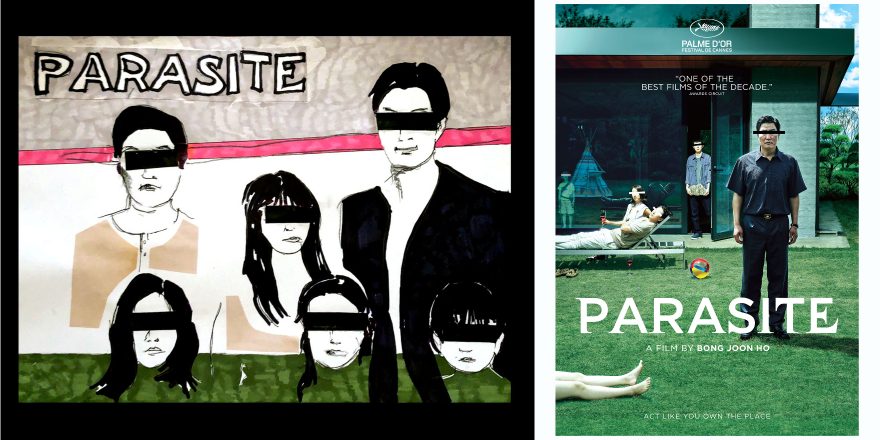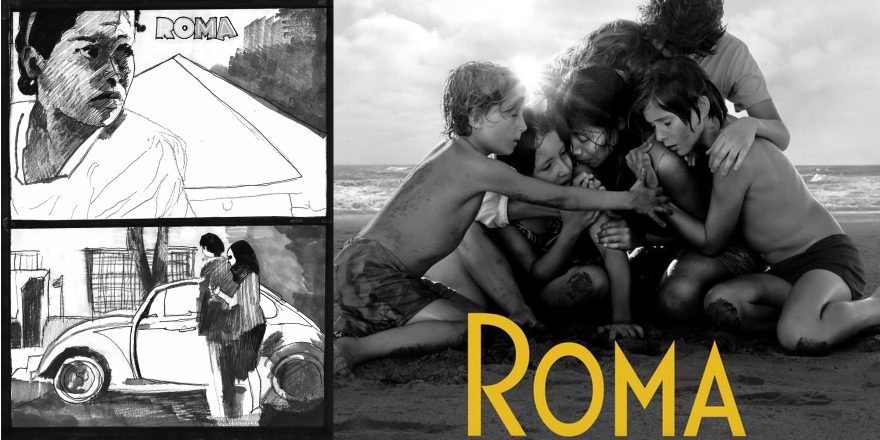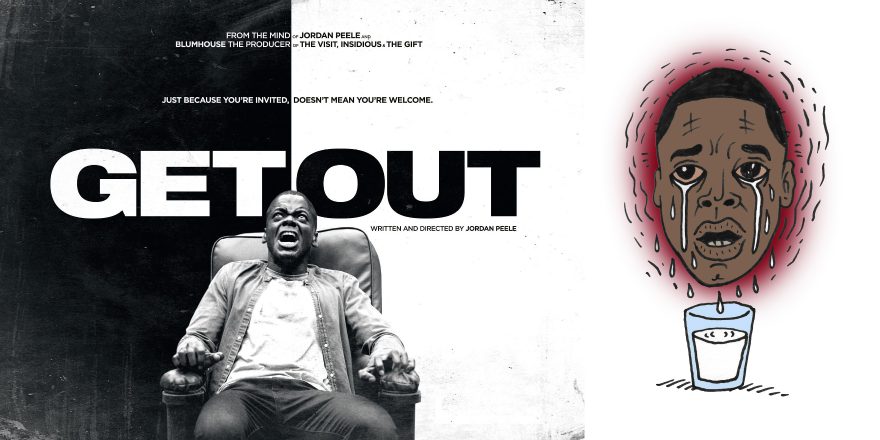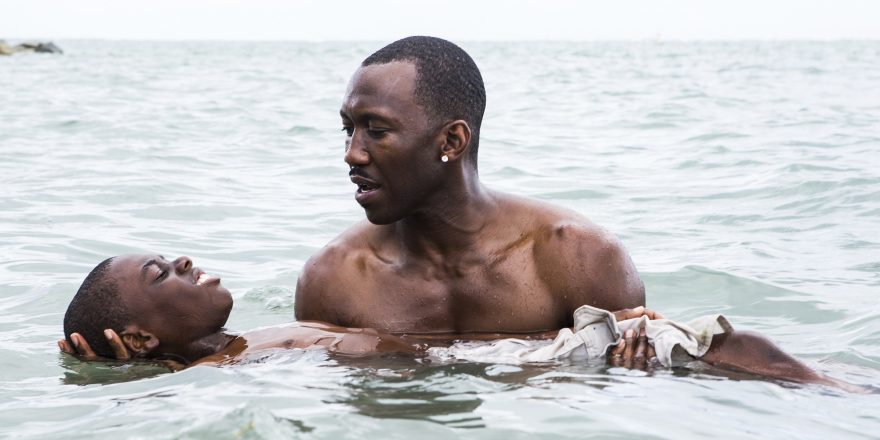Talkhouse Film contributors and a select few friends of the site voted on their favorite theatrical releases of 2019. The results of the Talkhouse Film poll are below, showing all the titles that received multiple votes; a selection of individual ballots will be posted tomorrow. Ten points were awarded to first-place films, 9 points were given to second place, etc.
Thanks to all who voted, and to the following contributors, whose wonderful written and graphic responses to the Top 10 films are featured below: Anton Ascher (via his dad, Rodney Ascher), Nikole Beckwith, Zach Clark, Megan Griffiths, Pat Healy, Jim Hosking, Bruce LaBruce, Alix Lambert, Danny Madden, James Marsh, Kent Osborne, James Ponsoldt, Randy Russell, Dash Shaw, Leah Shore, Chelsea Stardust, Travis Stevens, Aaron Stewart-Ahn, Alex Thompson and Onur Tukel.
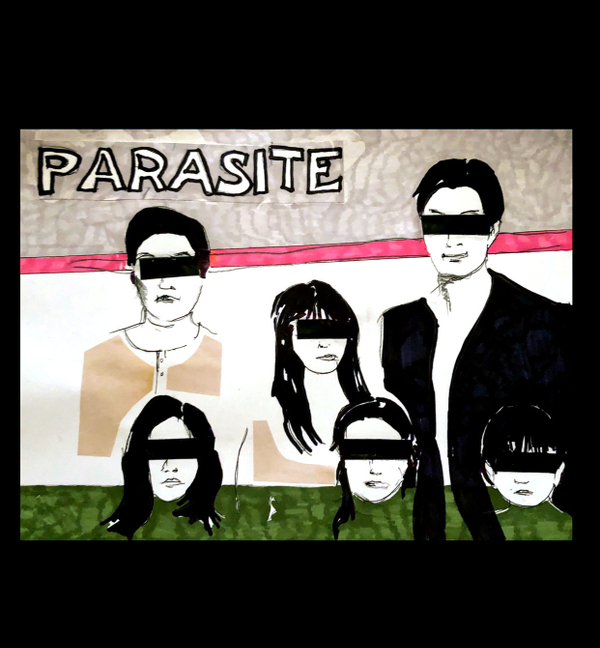
1. Parasite 381
Whenever I watch a film, I’m worried that I won’t be able to follow the plot or distinguish between the characters or remember their names. I get anxious. I’ve felt like this all my life. I’m not an idiot (despite what you’ve heard), I’m just sensitive and magical. But with Parasite, my anxiety fucked off immediately through the side-door located directly beneath the green illuminated EXIT sign. I felt like a little child at the movies once again. A little child who was also watching it with his son who is six foot four inches tall. Parasite is not a radical film. It wields no ideological knife, though it does wield a knife. (Uh oh, spoiler alert!) Parasite is about class and division, but more than that it is entertainment and it is escapism – two things I abhorred when I believed that cinema had to be more than that. I don’t believe that anymore. Now I just want cinema to be whatever it fucking wants to be as long as it isn’t preachy or patronizing. I have watched Parasite two times. First, in the cinema with my son. Second, at home with my son and my daughter. For me, it was infinitely more involving on the big screen, and of course I was experiencing it for the first time. But the filmmaking is such a joy on the big screen. Bong Joon-Ho knows his onions so well that he is currently mentoring the Board of Governors of The National Onion Association, which is the principal onion authority throughout the United States representing onion growers and supporting the onion industry at large on how to grow the most succulent onions of all time. The National Onion Association has also made a limited edition batch of T-shirts bearing the slogan “Bow Down to Bong,” and you can buy one from their website. But please hurry. Stocks are running very low. Don’t say I didn’t warn you. Parasite is funnier than any other film I saw this year. Truth is, I don’t think I like comedies, but I didn’t feel the overbearing presence of the narcissist director at all when watching Parasite. I just felt joy observing the delightful characters galloping on top of this frisky plump plot and … Anyway, the point is Parasite reminded me that filmmaking could be fun. Fun feels so rare and radical right now. Are we actually allowed to have fun? They are in South Korea. (Jim Hosking)
Image by Alix Lambert
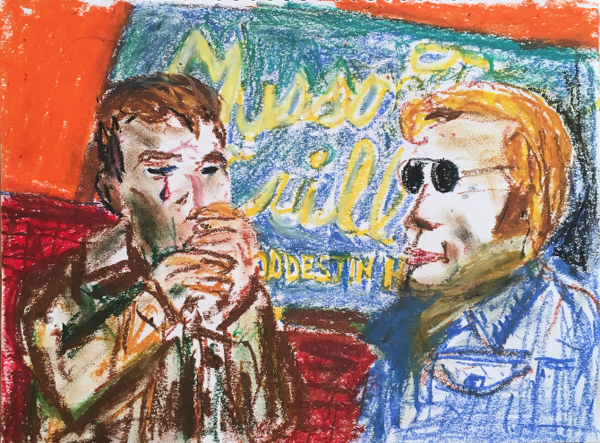
=2. Once Upon a Time … in Hollywood 214
Where do I begin? … 1.) If I had a time machine, I would travel back to late ’60s/early ’70s Hollywood. Now I don’t have to. 2.) I am a middle-aged white man in Hollywood at a time of enormous change in our business and culture, and I don’t know if there is a place for me in all of this. FWIW, I was driving Lyft this summer, unsure if I had a future in this town (or if I wanted one). I took off work to see the first show at the Cinerama Dome in Hollywood on opening day (an advantage of seeing movies in L.A. is sometimes the theater you are watching it in comes on screen and everyone applauds loudly). Which leads me to 3.) In Hollywood, everything can change in a second. The following week, I was offered three different television series and had to turn one down. So what I’m saying is very personal. That being said … 4.) I’ve never in my life seen a movie so alive to the possibility that anything is possible at any given moment, cinematically speaking. There has never been a film that left me both so exhilarated about life and work and movies and so saddened at what we’ve lost and what can never again be. But there is also an awareness that it’s possible to feel both things at once, in life and in a movie, and not be crazy. In fact, that’s how I feel most of the time. I could write a 200-page essay just off the top of my head about everything in this movie and what it means to me based on my first five viewings (four in the theater – I can’t even remember the last time I saw something twice in the theater), but you have probably already stopped reading as this is supposed to be kind of short. (Pat Healy)
Image by Randy Russell
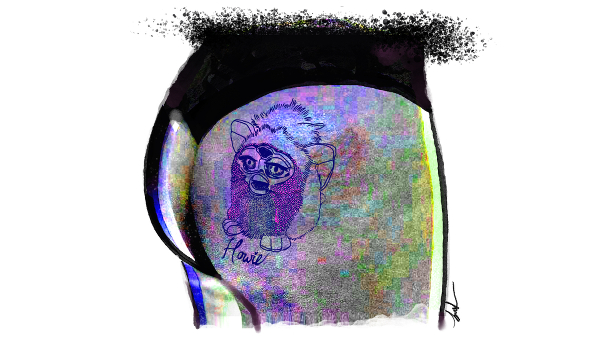
=2. Uncut Gems 214
As Scorsesian as Todd Phillips’ Joker undoubtedly is, it’s the Safdie brothers’ Uncut Gems that establishes the rising young filmmakers as the true cinematic heirs to seventies Scorsese, not to mention Friedkin, Cassavetes, Mann, De Palma, May, Altman, and a few others you could mention. After a Friedkinesque opening scene (think The Exorcist or Sorcerer) set in an Ethiopian opal mine, Uncut Gems (there’s quite an irony baked right into the title) takes off as the camera enters a rare black opal as if it were a glowing universe unto itself, then segues into a parallel universe: the colonoscopy of jeweler Howard Ratner (Adam Sandler). It’s one of the boldest openings of a movie in recent memory, and by the end of the credit sequence, the entire universe of the movie has already been deftly established. What follows is the harrowing downward spiral of a rare gem dealer with the deadliest case of “dragon fever” this side of Lord of the Rings. (When Howard finally gets the rare opal in his hands, he says, “Holy shit, I’m gonna cum.”) Sandler is superb, and there are so many great set pieces in the film that it’s hard to choose a favorite. Two of mine would have to be the “spying on the mistress” sequence (with a nod to De Palma) and the “naked in the trunk” sequence (which could almost be an outtake from Cassavetes’ The Killing of a Chinese Bookie). A single tracking shot of breakout star Julia Fox walking in front of a club is alone worth the price of admission. No spoilers, but the ending, in which the camera burrows into another hole leading to the inside of the magic opal, brings to mind the end of Altman’s McCabe and Mrs. Miller, achieving a mystical, almost metaphysical realm of cinematic transcendence. (Bruce LaBruce)
Image by Leah Shore
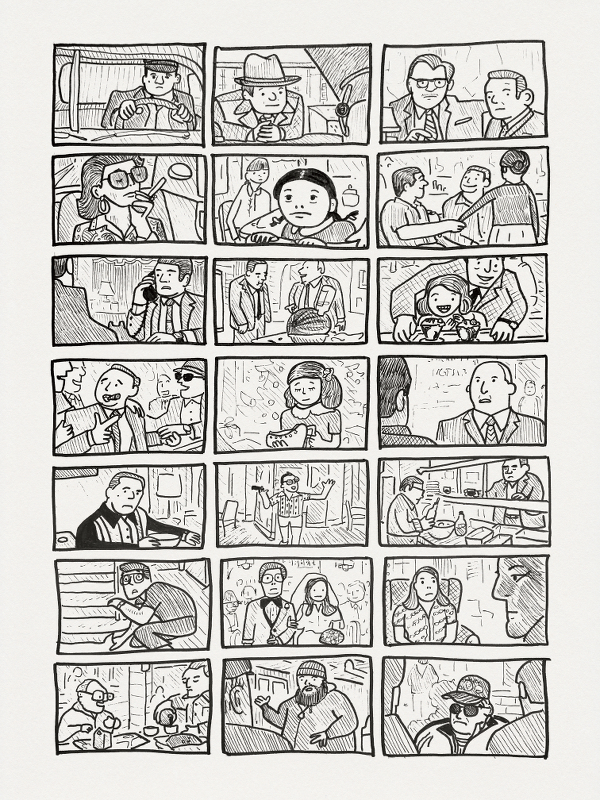
4. The Irishman 184
Yes: It’s flabby, it meanders and it wanders down blind alleys. The first hour is labored and expositional and also contains most of the dodgy CGI de-aging – airbrushed faces tethered to the creaky, arthritic movements of old men. But the film slowly gathers weight, as we witness a brilliant, historically significant filmmaker confronting his own mortality and dragging his aging cast to do the same. That weight is the dead weight of morbidity, of guilt that cannot be expiated, of time running out, of vultures gathering. This is a film made by an older man who seems aware that his own future is rapidly contracting, too.
For a film that dispenses violent death so casually and brutally, it ultimately becomes a prolonged study of the old man mostly responsible for all that violence, who seeks a tidy, peaceful death for himself. In doing so, it courts sentimentality, possibly a first for a Scorsese film. Hitherto, he has been a bracingly unsentimental filmmaker but in this late masterpiece, the cosy blanket of sentimentality is actually welcome, naturally following on from the bravado, the cruelty and viciousness of most of Scorsese’s protagonists, including this one. Old men get soft and sentimental, albeit stubbornly and cantankerously so, as their guilt and regrets make them vulnerable and impotent. And here’s the thing; the sentimentality of its closing act is genuinely moving as enacted by De Niro, in a performance that holds the film together. Scorsese’s best films have many admirable qualities, but rarely are they moving or forgiving in quite the way The Irishman is.
For all its longueurs, The Irishman remains compellingly watchable for nigh on three-and-a-half hours, a miracle for a film that can feel too long in its beginning and yet not long enough when it’s over. There are few movies that can successfully claim your undivided attention for that amount of time, and all of them are great. And so is The Irishman, even if it resides somewhere near the bottom in Scorsese’s pantheon of masterpieces – Mean Streets, Taxi Driver, Raging Bull, King of Comedy, Goodfellas – which is hardly damning it with faint praise. We should be grateful for The Irishman, and I am. (James Marsh)
Image by Kent Osborne, video by Ron Lent
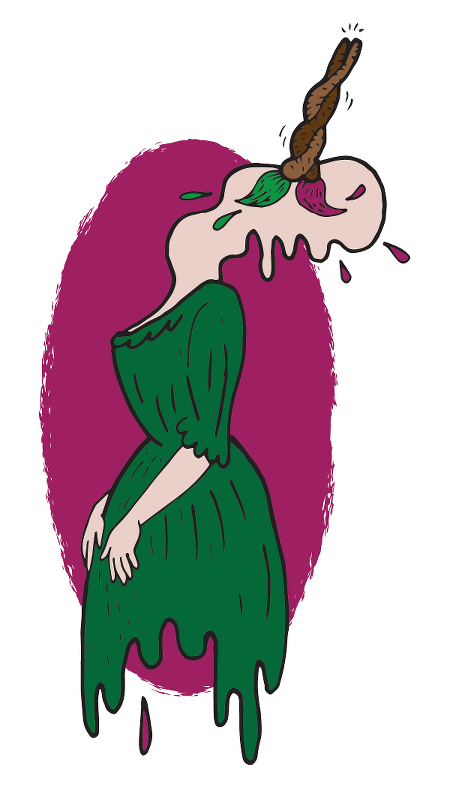
5. Portrait of a Lady on Fire 176
There is a quiet fierceness in Portrait of a Lady on Fire. It made me think — about the interdependence between an artist and her subject, about the ways in which dominion over our personal choices impacts our lives, about the depth of the connections that can be formed in narrow pockets of time. It made me feel — the yearning of those who see what they want and know it won’t last, the impotent rage of having your decisions dictated in a society that has been built to suppress you, the power of memories to carry us forward in grief, the simple pleasure of a meal surrounded only by the people you want most to be there. It is a powerful, lush, feminist film that had me mesmerized from the first stunning frame to the last. Portrait of a Lady on Fire manages to exhibit both through its characters’ journeys and its filmmaking technique that rendering a portrait is about more than recreating the surface of things — it’s about looking closely and capturing the flame that illuminates your subject from within. (Megan Griffiths)
Image by Zach Clark

6. Marriage Story 113
I saw Marriage Story in an audience full of Greeks at the Thessaloniki Film Festival. Kelly and I couldn’t sit together – we got to the screening late (or did it start early?) – and I was buried in the front rows in a plot of Yiayias and Papous. The laughter and tears came in grateful waves. Afterward, I was afraid Kelly wouldn’t love it as much as I did, and all the things I loved about her might become flotsam on a list our children would read one day, as Nicole and Charlie’s son Henry does in the film.
I have always loved Noah Baumbach’s work, but this is the first film of his I wanted to throw myself into. I was not comfortable dismissing Charlie and Nicole as assholes or sycophants; any arrogance or selfishness felt inborn and natural, not pathological. They were, in many ways, the best versions I could imagine of myself in the near future. Loving parents. Successful artists and collaborators. Kind and big-hearted human beings.
This is the best Noah Baumbach film I have seen, but it’s also one of the best films, full stop. It is big and emotional and laugh-out-loud funny the way movies should be. It’s a signpost for where good art goes, and an argument, to paraphrase the novelist John Irving, that if we don’t risk sentimentality, we risk not saying anything at all. (Alex Thompson)
Image by Onur Tukel
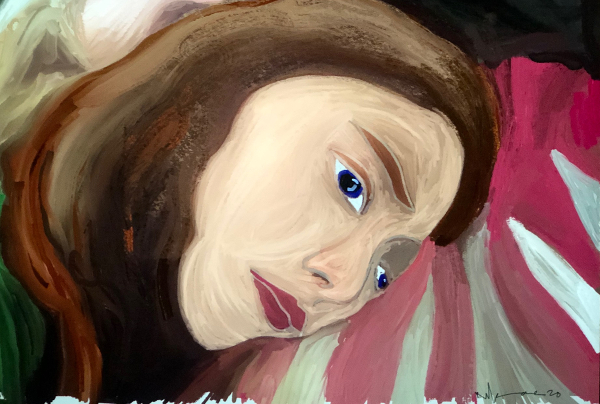
7. Little Women 104
In memory, time tends towards the nature of tides, receding and returning. Yet in life, time marches on. As is said by the doomed Beth March in Little Women: “It goes out slow but it can’t be stopped.”
Our parents, our brothers and sisters – as childhood ends we’re left with a wash of memories, of who our loved ones were to us at fixed moments in time: at first consciousness, at adolescence, at first heartbreak, at the inevitable letting go. Despite our well-worn, heart-stamped memories, we keep getting older. But whether receding or returning, damned up or flowing over, we are always the same water.
This is perhaps the greatest feat – and there are many – of Greta Gerwig’s Little Women: the film feels alive and has consciousness. The film remembers and anticipates. The film achingly misses and hopes for, as Jo March says, “everything.”
The March sisters fight against the confines of patriarchal society’s trap – with each choice they make, their future options grow narrower, while their male counterparts, like the foppish but endearing Laurie, can flounder through a life of second chances with rare consequences. By late adolescence, the sisters are already on the tightrope of female life, and their options are: a) once-in-a-generation genius or b) domestic life.
No pressure.
The little lives of the March sisters grow to titanic proportions as the film scribbles backwards and forwards in time, like a replay, like a revision, like a ghost story where the characters haunt themselves, like … a beloved memory. By the end of Little Women, it’s hard not to rejoice that Jo found her voice as a storyteller, owned her voice, and invited us into her childhood home. (James Ponsoldt)
Image by Nikole Beckwith (“Childhood is over.”)
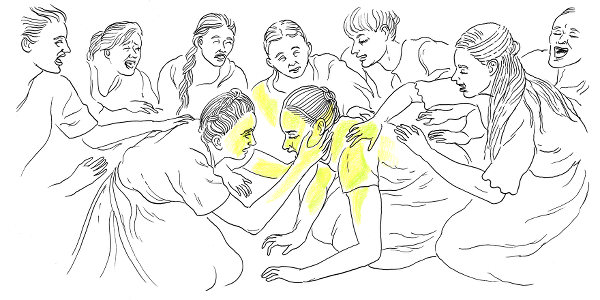
8. Midsommar 102
It’s almost too obvious to say, but Ari Aster’s films are as cleverly designed as the tapestry that opens Midsommar. They overwhelm you with the vibrancy of the visuals, the classical presentation and remarkable craftsmanship. But as you look at the details closer, as you begin to really absorb the story being told in the simplified iconography, you’re hit with this shock of discovery that is key to all great works of art.
In fact, there was a moment while watching the film where I wondered if this was what it was like for audiences who got to experience a new piece of music by Mozart firsthand.
Ari Aster is a virtuoso — a filmmaker in complete control of theme, technique, narrative and performance. His attention to detail results in a fully realized world that he deftly fucks with from scene to scene, shot to shot. He brings a sense of wonder back to the horror genre.
Part of what makes the film so special is that he understands the power of holding information back. We lurch with Dani through this journey, and while the writing is often quite literally on the wall (in the case of her apartment and the village, actually hanging there), it takes time for her and us to see it clearly. The film places much of the information we need in spots we’re not accustomed to looking. In the production design, in the reactions of characters who have clearly been given contradictory information but assume the misunderstanding is on their part. And in the editing, where a simple hard cut of Dani escaping to a dorm room bathroom and landing in an airplane bathroom tells us more about her pain, the injudicious nature of the trip and of the chaos to come than a long dialogue scene ever could.
These details are embroidered in to scenes so effectively that you might miss some depending on where you’re looking. The performances and writing during Christian’s gaslighting about the trip in Dani’s apartment were so strong I didn’t even realize how brilliant the framing and camera move was throughout the scene. But the accumulation of each decision is something I felt deep in my body while watching. The information you know you absorbed, the information you subconsciously retained and the misinformation you are clearly being given triggers this sense of unease and danger that is refreshingly different than the overt storytelling and threats presented in most horror films.
I’m in awe of the brilliance of the world he and his team engineered here. (Travis Stevens)
Image by Dash Shaw
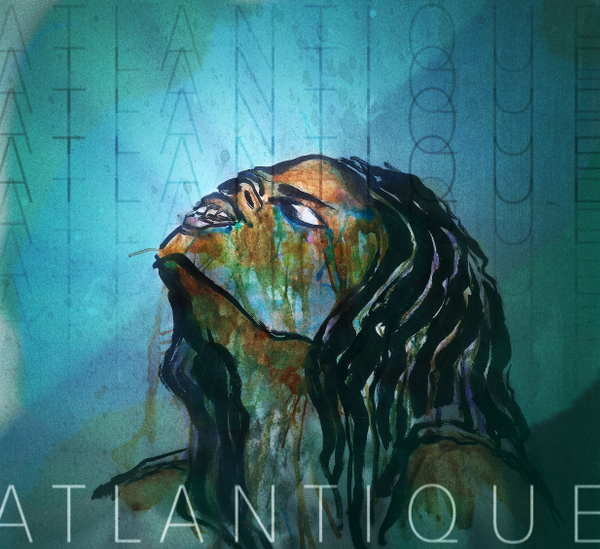
=9. Atlantics 90
Some movies are mirrors. Agnès Varda, who we lost in 2019, framed two lovers’ faces at right angles, as reflections of each others’ souls, in her debut feature, La Pointe Courte, in a new way. That movie was made after she returned to the seaside town where she was born. Mati Diop returned to the seaside town of Dakar in the country of Senegal, birthplace of her father, to make her first feature film, and like Varda, she discovered a new way to film the reflection of two lovers.
Apologies for being vague, but this time I really mean it, the less you know about Atlantics, the better. Even the (English language) poster will ruin one of the movie’s many beautiful and unexpected surprises, ideas that have power. I will say only that it is a romance / fable / detective / coming-of-age / paranormal mystery. And it is remarkably beautiful, shot by Claire Mathon (who also lensed last year’s extraordinary Portrait of a Lady on Fire), with a score by Fatima Al Qadiri and a host of first-time actors whose existence on screen is both revelatory and a reckoning.
Atlantics has a certain way of showing you the boundaries between the dead and the living, between the sky and the sea, between lovers and enemies, cops and criminals, reality and fantasy, past and future, man and woman, a gaze and a mirror. It’s a liminal film, made in the spaces between absolutes. As the definition of cinema eludes us, in this era where the act of watching a movie is everting, what remains most cinematic is a kind of broken mirror handed to you, an experience of seeing the world in an exiled language of sound and image. Mati Diop’s film shows you a way of gazing and hearing the sea, the moon, an alleyway at night, a dancefloor, a human face looking back at you, that is unforgettable. It feels like a home you never got to visit, or a dream you might have someday. It is the sensation of knowing we all come from the ocean but we can never return there. Atlantics is what I hope to find in movies the most, a way of looking at something, of being listened to, a new way of being seen. (Aaron Stewart-Ahn)
Image by Danny Madden

=9. Jojo Rabbit 90
There are very few films out there that reach out and take hold of me. … Jojo Rabbit did just that. When I first saw Jojo Rabbit, I knew nothing about it, except it was directed by Taika Waititi. I was a fan of Waititi’s work; Hunt for the Wilderpeople was one of my favorite films in 2016 and I loved What We Do In Shadows, so I knew I was in for something special. What I wasn’t expecting was the emotional reaction I had to the film. It starts out as this self-aware comedy with absurdist and satirical elements about the adventures of a Hitler youth named Jojo Betzler, but halfway through the story, the film takes a turn that hit me hard (for those who have seen the film, all I will say is “shoes”). From that moment on, I knew the story was going in a different direction. I rarely connect with films in such a way (I blame my cold, black heart) but Jojo Rabbit, with its brilliant cast, including Waititi in a supporting role as Jojo’s imaginary best friend, Adolf Hitler, sent me on an emotional rollercoaster. Without giving spoilers away, the ending of the film sent me into hysterical sobs of happiness with its double-whammy of the beautiful German version of David Bowie’s “Heroes” (I’m a sucker for this song) and a Rainer Maria Rilke poem. This film’s message of growth, change and acceptance put me into a really great headspace and mindset to close out 2019, with hope for a better 2020. No feeling is final. (Chelsea Stardust)
Image by Anton Ascher, aged 9. (Look for more of his digital art in his dad Rodney Ascher’s forthcoming film, A Glitch in the Matrix.)
11. Climax 83
12. The Lighthouse 78
13. Pain and Glory 77
14. Honeyland 72
15. The Souvenir 70
16. The Farewell 61
17. High Life 59
=18. Dolemite is My Name 55
=18. Honey Boy 55
=20. Knives Out 53
=20. Joker 53
22. A Hidden Life 48
23. 1917 47
24. Us 44
25. Monos 42
26. Birds of Passage 39
=27. Ford vs Ferrari 36
=27. Hustlers 36
=29. Booksmart 35
=29. The Last Black Man in San Francisco 35
=31. Ash is Purest White 34
=31. Our Time 34
33. Ad Astra 31
34. Under the Silver Lake 30
35. American Factory 29
36. An Elephant Sitting Still 26
37. What You Gonna Do When the World’s on Fire? 25
38. Long Day’s Journey Into Night 24
=39. Apollo 11 23
=39. Dark Waters 23
=39. Her Smell 23
=42. Amazing Grace 22
=42. Knife + Heart 22
=42. Peterloo 22
=45. The Beach Bum 21
=45. A Beautiful Day in the Neighborhood 21
=45. Dragged Across Concrete 21
=45. Richard Jewell 21
=45. Waves 21
50. Doctor Sleep 20
=51. Maiden 19
=51. Too Old To Die Young 19
=53. Give Me Liberty 17
=53. The Peanut Butter Falcon 17
=55. Clara’s Ghost 16
=55. Toni Morrison: The Pieces I Am 16
=57. Hail Satan? 15
=57. Chained for Life 15
=57. Crawl 15
=57. Diamantino 15
=57. The Report 15
=62. Asako I & II 14
=62. Avengers: Endgame 14
64. The Mountain 13
=65. Bombshell 11
=65. John Wick: Chapter 3 – Parabellum 11
=65. One Child Nation 11
=65. The Painted Bird 11
=69. Everybody Knows 10
=69. Gloria Bell 10
=69. Homecoming 10
=69. I Lost My Body 10
=69. Judy 10
=69. Mister America 10
=69. Queen & Slim 10
=69. Rolling Thunder Revue: A Bob Dylan Story by Martin Scorsese 10
=69. Tito 10
=69. Transit 10
79. Aquarela 9
=80. For Sama 8
=80. In Fabric 8
=80. My First Film 8
83. One Cut of the Dead 7
=84. Rocketman 7
=84. Spider-Man: Far From Home 7
=84. The Climb 7
=84. The King 7
=84. The Two Popes 7
=89. Bait 6
=89. End of the Century 6
=89. Knives and Skin 6
=89. The Chambermaid 6
=89. The Wild Pear Tree 6
=94. Black Mother 3
=94. Ernie & Joe 3
96. Relaxer 2


